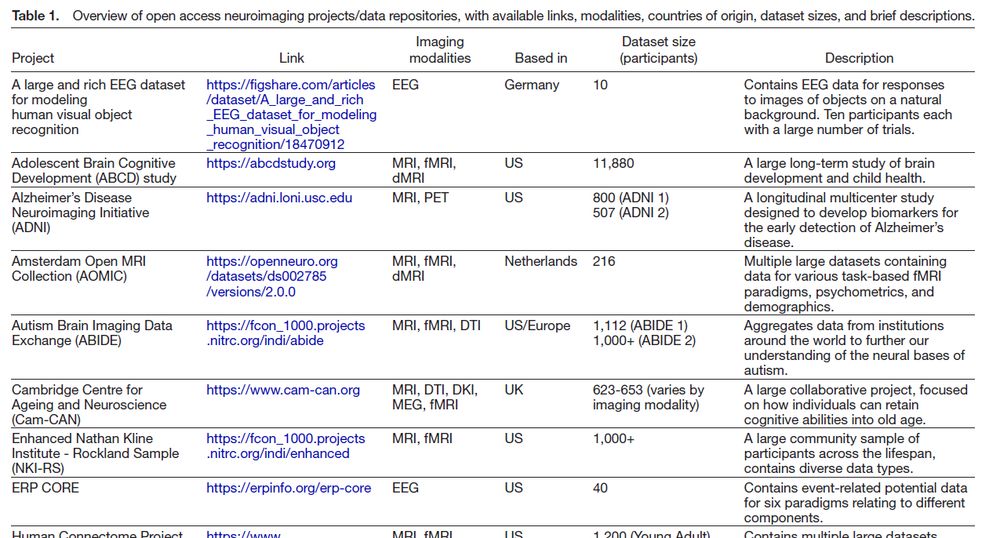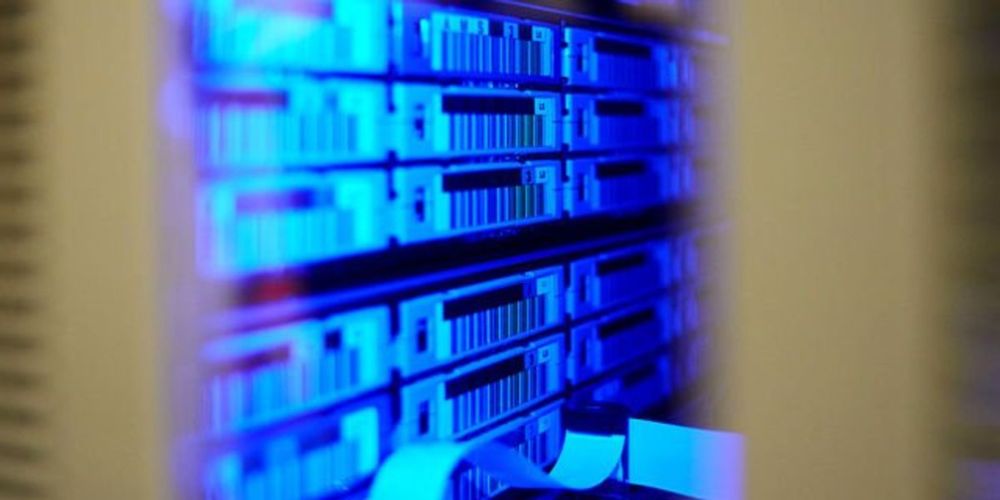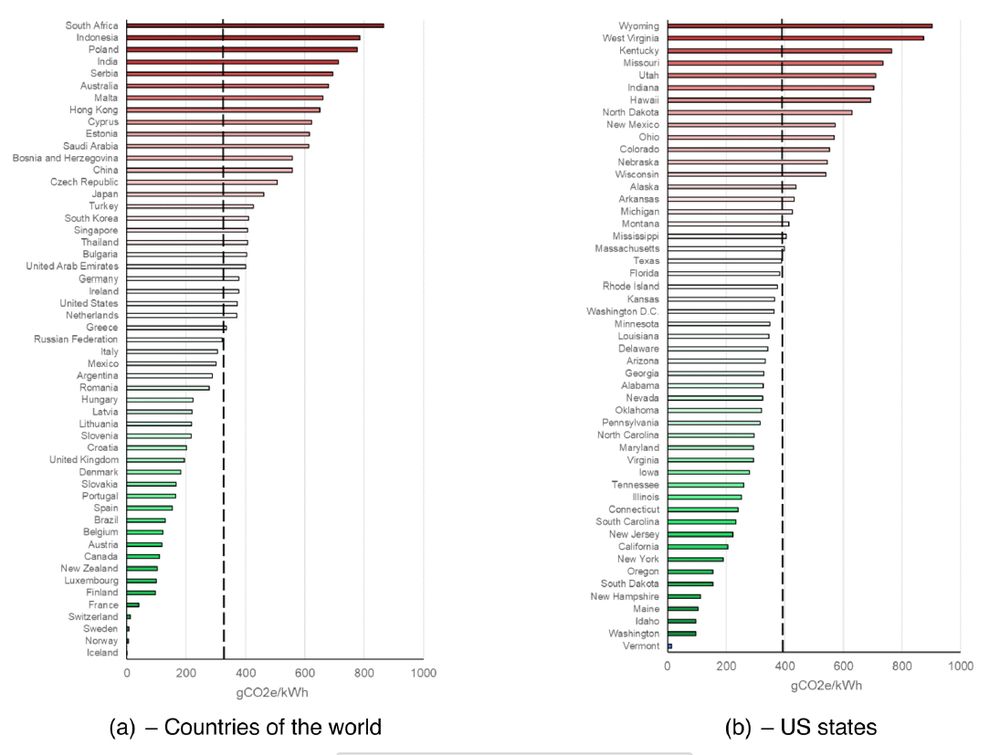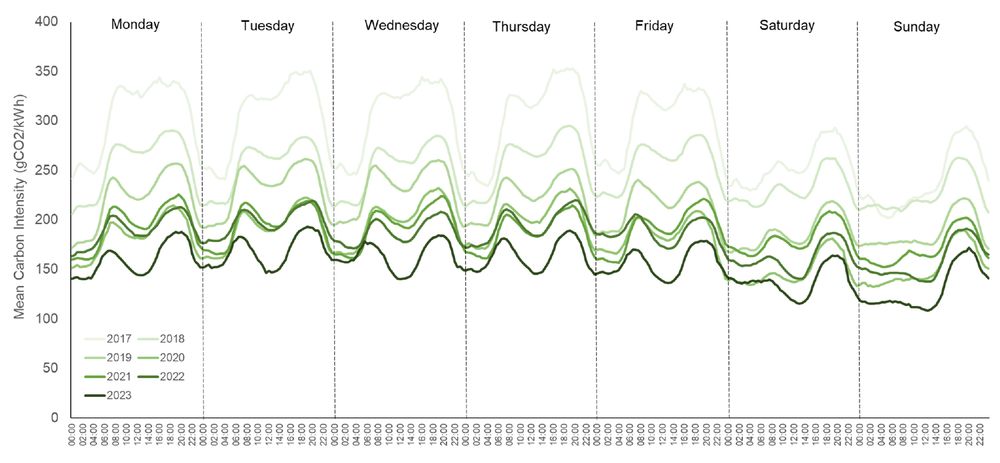Discussing the carbon footprint of data processing within your neuroimaging community will make it easier to think seriously about this issue. This will help in embedding sustainable ideas into standard practice 🌱
Discussing the carbon footprint of data processing within your neuroimaging community will make it easier to think seriously about this issue. This will help in embedding sustainable ideas into standard practice 🌱
Running analysis on previously collected and preprocessed data is a great way to test hypotheses without using additional energy to preprocess it yourself. We provide a table describing different open access datasets.

Running analysis on previously collected and preprocessed data is a great way to test hypotheses without using additional energy to preprocess it yourself. We provide a table describing different open access datasets.
It's good practice to share all raw neuroimaging data on platforms like OpenNeuro. But this storage still has a carbon footprint. Consider whether just sharing preprocessed files would be enough to allow others to make use of your data.
It's good practice to share all raw neuroimaging data on platforms like OpenNeuro. But this storage still has a carbon footprint. Consider whether just sharing preprocessed files would be enough to allow others to make use of your data.
Large centralised data centres tend to be more efficient, but this often means relying on big tech comapnies to host data. Alternatives like EuropHPC JU may allow storage that is efficient & sustainable:
eurohpc-ju.europa.eu/index_en

Large centralised data centres tend to be more efficient, but this often means relying on big tech comapnies to host data. Alternatives like EuropHPC JU may allow storage that is efficient & sustainable:
eurohpc-ju.europa.eu/index_en
For files you do need to keep, have a data management plan in place. This could include deleting data after a certain time period (e.g., 10 years) or transitioning it to tape storage.
See spectrum.ieee.org/tape-storage...

For files you do need to keep, have a data management plan in place. This could include deleting data after a certain time period (e.g., 10 years) or transitioning it to tape storage.
See spectrum.ieee.org/tape-storage...
Energy is needed to store and backup data. you can reduce your footprint by deleting files you don't need. For #fMRIPrep, junk files make up to 96% of total size.
Our tool fMRIPrepCleanup, automatically finds/removes this data: github.com/NickESouter/...

Energy is needed to store and backup data. you can reduce your footprint by deleting files you don't need. For #fMRIPrep, junk files make up to 96% of total size.
Our tool fMRIPrepCleanup, automatically finds/removes this data: github.com/NickESouter/...
You can also consider choosing cloud computing services based in countries/regions with lower average carbon intensity.
2022 data for countries and US states ⬇️

You can also consider choosing cloud computing services based in countries/regions with lower average carbon intensity.
2022 data for countries and US states ⬇️
The carbon intensity of electricity peaks at busy times and drops overnight and at the weekend. By scheduling preprocessing/analysis to run at low intensity times, you can use the same amount of energy while emitting less carbon.
Data for the UK ⬇️

The carbon intensity of electricity peaks at busy times and drops overnight and at the weekend. By scheduling preprocessing/analysis to run at low intensity times, you can use the same amount of energy while emitting less carbon.
Data for the UK ⬇️
Reduce compute required for your research by only performing preprocessing steps that are necessary. In our recent study, we provide tips on how to minimise emissions from #fMRIPrep while still getting good quality data:
osf.io/preprints/os...
Reduce compute required for your research by only performing preprocessing steps that are necessary. In our recent study, we provide tips on how to minimise emissions from #fMRIPrep while still getting good quality data:
osf.io/preprints/os...
There are tools available to estimate emissions from computing, like the Green Algorithms online calculator: calculator.green-algorithms.org
This can be a good first step in understanding the impact of your computing footprint, and taking action to reduce it!
There are tools available to estimate emissions from computing, like the Green Algorithms online calculator: calculator.green-algorithms.org
This can be a good first step in understanding the impact of your computing footprint, and taking action to reduce it!
Repeating data processing or analysis requires additional energy usage, and therefore carbon emissions. Starting with a plan of exactly what you will do with your data can reduce unforseen obstacles, and therefore unecessary repetitions
Repeating data processing or analysis requires additional energy usage, and therefore carbon emissions. Starting with a plan of exactly what you will do with your data can reduce unforseen obstacles, and therefore unecessary repetitions

